If you think broccoli is just about the florets, think again. The leaves of the broccoli plant, often overlooked, are actually a nutrient-rich and versatile vegetable that offers an array of health benefits. It turns out they contain even higher levels of essential nutrients compared to the florets, making them a true superfood. Broccoli leaves are packed with vitamins A, C, and K, as well as fiber, thiamine, niacin, calcium, iron, and potassium. But that’s not all, they also contain carotenoids, chlorophylls, vitamins E and K, calcium, manganese, and antioxidants. Incorporating these mighty leaves into your diet can contribute to your overall well-being and optimal health.
Key Takeaways:
- Broccoli leaves are a nutrient-rich superfood packed with vitamins and minerals.
- They contain higher levels of essential nutrients compared to the broccoli florets.
- Incorporating broccoli leaves into your diet can contribute to optimal wellness and overall health.
- They are a versatile vegetable that can be used in various dishes.
- With their impressive nutritional profile, broccoli leaves are definitely worth adding to your plate.
The Environmental Impact of Broccoli Leaves
When it comes to sustainability and reducing our carbon footprint, every little effort counts. Did you know that incorporating broccoli leaves into our meals can have a positive environmental impact? The leaves of the broccoli plant are often overlooked, but they can be a valuable resource for waste reduction and sustainable farming practices.
Most of the broccoli plant is typically discarded, but utilizing the nutrient-dense broccoli leaves can significantly increase the total yield of the plant by almost 50%. By incorporating these leaves into our meals, we not only reduce waste but also support sustainable farming practices.
Broccoli plants continue to grow even after the crowns are harvested, providing a continuous source of leaves throughout the season. This sustainable approach allows for a more efficient use of resources and contributes to the overall well-being of our planet.
By choosing broccoli leaves as part of our diet, we actively participate in waste reduction and support sustainable farming practices. Together, we can make a difference in preserving the environment for future generations.
“Utilizing the nutrient-dense broccoli leaves not only reduces waste but also supports sustainable farming practices.”
Benefits of Incorporating Broccoli Leaves:
- Waste reduction: Utilizing the entire broccoli plant, including the leaves, helps minimize waste and optimize resource usage.
- Sustainable farming: By supporting the consumption of broccoli leaves, we encourage sustainable farming practices that promote environmental preservation.
- Carbon footprint reduction: Incorporating broccoli leaves into our meals reduces the demand for other resources and contributes to a lower carbon footprint.
Make a conscious choice to include broccoli leaves in your diet and join the mission towards a more sustainable future.
Taste and Texture of Broccoli Leaves
Broccoli leaves offer a delightful combination of taste and texture that can enhance any dish. With their mild and earthy flavor, broccoli leaves provide a subtle hint of the familiar broccoli florets. Unlike other dark leafy greens such as kale and collard greens, broccoli leaves have a less bitter profile, making them more palatable to those who may find stronger greens overwhelming.
The texture of broccoli leaves is another notable feature. They are tender and less fibrous compared to other greens, giving them a pleasant mouthfeel when consumed. This delicate texture allows for effortless chewing and easy incorporation into a variety of recipes.
Broccoli leaves are incredibly versatile, adding depth and flavor to various culinary creations. Their mild taste and tender texture make them an excellent addition to salads, providing a fresh and vibrant element to your greens. Alternatively, you can use broccoli leaves as wraps for a unique twist on traditional sandwich fillings or rolls. Their flexibility allows you to experiment with different fillings and create delicious and nutritious handheld meals.
For those who enjoy juicing, broccoli leaves can be an excellent addition to your favorite juicing recipes. Their subtle flavor blends seamlessly with other fruits and vegetables, infusing your juices with added nutrients and a pleasant green hue.
Broccoli leaves also shine when cooked alongside meats and other vegetables. Whether sautéed, steamed, or added to stir-fries, they provide a delightful taste and texture that complements a wide range of dishes. Their versatility allows for endless culinary creativity, making it easy to incorporate them into your everyday meals.
Enhance Your Culinary Creations with Broccoli Leaves
Broccoli leaves truly shine as a versatile ingredient that elevates the taste and texture of any dish. Whether enjoyed raw, juiced, or cooked, they provide a unique flavor and tender mouthfeel that adds depth to your culinary creations. So, go ahead and explore the diverse possibilities of incorporating broccoli leaves into your meals for a delightful and nutritious dining experience.
And remember, the best way to enjoy the taste and texture of broccoli leaves is to experiment and have fun in the kitchen. Let your creativity flow and let these versatile greens take your dishes to new heights!
Nutritional Content of Broccoli Leaves
When it comes to nutritional content, broccoli leaves are a powerhouse of essential vitamins and minerals. They offer a wide array of nutrients that contribute to overall health and well-being. Rich in calcium, iron, phosphorus, potassium, zinc, thiamin, riboflavin, niacin, vitamins A, B6, E, and K, and folate, broccoli leaves are a nutrient-dense addition to your diet.
One standout compound found in broccoli leaves is sulforaphane. This natural compound has been linked to potential health benefits, including lowering blood sugar levels and preventing the formation of cancer cells. Including broccoli leaves in your meals can provide you with a good dose of this beneficial compound.
Another significant component of broccoli leaves is carotenoids. These powerful antioxidants are known for their ability to lower the risk of heart disease and boost the immune system. By incorporating broccoli leaves into your diet, you can enjoy the benefits of these valuable compounds.
Nutritional Content of Broccoli Leaves
| Nutrient | Amount per 100g |
|---|---|
| Calcium | 105mg |
| Iron | 0.77mg |
| Phosphorus | 48mg |
| Potassium | 534mg |
| Zinc | 0.41mg |
| Thiamin (B1) | 0.067mg |
| Riboflavin (B2) | 0.125mg |
| Niacin (B3) | 0.639mg |
| Vitamin A | 623μg |
| Vitamin B6 | 0.175mg |
| Vitamin E | 2.33mg |
| Vitamin K | 177μg |
| Folate | 40μg |
As you can see from the table above, broccoli leaves are a rich source of various nutrients. Including them in your diet can help you meet your daily nutrient requirements and enjoy their potential health benefits. So go ahead and add some broccoli leaves to your next meal for a delicious and nutritious boost!
Cooking and Preparation Tips for Broccoli Leaves
Broccoli leaves are not only nutrient-rich but also incredibly versatile in the kitchen. Here are some cooking methods, recipes, and preparation tips to help you get the most out of this underrated leafy green.
1. Roasting:
Roasting broccoli leaves brings out their natural flavors and adds a delightful crispiness. Simply toss the leaves with olive oil, salt, and your favorite herbs or spices. Spread them out on a baking sheet and roast in a preheated oven at 400°F (200°C) for about 10-15 minutes or until they turn crispy and slightly browned.
2. Steaming:
Steaming broccoli leaves is a quick and healthy way to enjoy them. Place a steamer basket in a pot with a few inches of water. Bring the water to a boil, add the leaves to the steamer basket, cover, and steam for 5-7 minutes or until the leaves are tender. Steamed broccoli leaves can be used as a side dish or added to salads, stir-fries, or soups.
3. Stir-Frying:
Stir-frying broccoli leaves allows you to create flavorful dishes in a short amount of time. Heat some oil in a wok or pan over high heat. Add the leaves and toss them quickly until they wilt and turn bright green. Season with your favorite sauces or spices and serve as a side dish or as part of a stir-fry with other vegetables and proteins.
4. Microwaving:
Microwaving broccoli leaves is a convenient option when you’re short on time. Place the leaves in a microwave-safe dish with a tablespoon of water. Cover the dish with a microwave-safe lid or plastic wrap, leaving a small vent. Microwave on high for 2-3 minutes or until the leaves are tender. Be cautious when removing the cover, as the steam can be hot.
5. Recipe Ideas:
There are countless ways to incorporate broccoli leaves into your favorite recipes. Here are a few ideas to get you started:
- Broccoli Leaf Salad: Toss fresh, thinly sliced broccoli leaves with a lemon vinaigrette, cherry tomatoes, cucumbers, and feta cheese.
- Broccoli Leaf Wraps: Use blanched broccoli leaves as a healthy alternative to tortillas for wraps filled with your favorite ingredients.
- Broccoli Leaf Pesto: Blend blanched broccoli leaves with garlic, pine nuts, Parmesan cheese, and olive oil to make a flavorful pesto sauce to use on pasta, sandwiches, or as a dip.
Remember, you can also substitute broccoli leaves for other leafy greens like spinach or kale in various recipes to add a unique twist to your dishes.
Broccoli leaves offer endless culinary possibilities, allowing you to explore different flavors and textures in your meals. Get creative in the kitchen and enjoy the many health benefits that broccoli leaves have to offer.
The History and Origin of Broccoli
Broccoli, a versatile vegetable enjoyed by many, has an interesting history and origin. It can be traced back to the wild mustard plant and was selectively bred by farmers over time to develop into the vegetable we know today. Its roots can be found in the Roman Empire, where it was first cultivated in the Mediterranean region.
In the United States, broccoli farming gained popularity in the 1920s, and it has since become a staple in American households. The most common types of broccoli found in the U.S. are hybrids of an Italian green broccoli variety called “Calabrese.”
The history and farming of broccoli showcase the efforts of farmers throughout the centuries to refine and cultivate this nutritious vegetable for our enjoyment today.
Key Takeaways:
- Broccoli has its origins in the wild mustard plant.
- Farmers selectively bred broccoli to develop it into the vegetable we know today.
- Broccoli dates back to the Roman Empire and was first grown in the Mediterranean region.
- U.S. farmers started growing broccoli in the 1920s.
- The most common types of broccoli in the U.S. are hybrids of the Italian variety “Calabrese.”
Nutritional Profile of Broccoli
Broccoli is a nutrient-rich vegetable that offers numerous health benefits. It is low in calories and fat but high in vitamins and minerals. A 1/2 cup of broccoli contains only 15 calories and provides essential nutrients such as vitamin C, calcium, iron, phosphorus, potassium, zinc, thiamin, riboflavin, niacin, and folate. One cup of broccoli has as much vitamin C as an orange. It is a versatile and nutritious vegetable that can be enjoyed in various dishes.
| Nutrient | Amount per 1/2 cup (approx. 78g) |
|---|---|
| Vitamin C | 51.6 mg (86% of the daily value) |
| Calcium | 35.2 mg (4% of the daily value) |
| Iron | 0.66 mg (4% of the daily value) |
| Phosphorus | 27.6 mg (3% of the daily value) |
| Potassium | 146 mg (4% of the daily value) |
| Zinc | 0.32 mg (2% of the daily value) |
| Thiamin | 0.042 mg (3% of the daily value) |
| Riboflavin | 0.08 mg (5% of the daily value) |
| Niacin | 0.712 mg (4% of the daily value) |
| Folate | 25.8 mcg (6% of the daily value) |
Source: United States Department of Agriculture (USDA)
Broccoli’s high nutritional content makes it an excellent addition to a balanced diet. It provides essential vitamins and minerals that support overall health and well-being. Incorporating broccoli into your meals can enhance the nutritional value of your diet and contribute to optimal wellness.
Health Benefits of Broccoli
Eating broccoli can have numerous health benefits. Its high antioxidant content helps protect cells from damage and promotes healing throughout the body. Broccoli is rich in a variety of antioxidants, including vitamin C, beta-carotene, and sulforaphane, which have been shown to have anti-inflammatory and cancer-fighting properties.
Antioxidants: Antioxidants in broccoli help combat oxidative stress and reduce the risk of chronic diseases such as heart disease, cancer, and diabetes.
Cancer Prevention: Sulforaphane, a natural compound found in broccoli, has been shown to inhibit the growth of cancer cells and reduce the risk of developing certain types of cancer, including breast, prostate, and colon cancer.
Blood Sugar Control: Broccoli contains fiber and chromium, which help regulate blood sugar levels and improve insulin sensitivity. Including broccoli in your diet may help prevent blood sugar spikes and promote better blood sugar control.
Joint Health: The anti-inflammatory properties of broccoli can benefit joint health by reducing inflammation and supporting the prevention or slowing down of osteoarthritis. The vegetable contains sulforaphane and other compounds that help protect and maintain joint health.
“Broccoli is a nutritional powerhouse, providing a wide range of vitamins, minerals, and other beneficial compounds that promote overall health and well-being.”
By incorporating broccoli into your diet, you can take advantage of its health benefits and support your overall wellness. Whether eaten raw in salads, steamed, roasted, or added to soups and stir-fries, broccoli is a versatile and nutritious vegetable that can be enjoyed in various ways.
Considerations for Consumption
While broccoli is generally a healthy vegetable, there are some important factors to consider when incorporating it into your diet.
Broccoli and Blood Thinners
If you take blood thinners, it is essential to be mindful of your broccoli consumption. Broccoli is high in vitamin K, which helps with blood clotting. While vitamin K is necessary for overall health, it can interfere with the effectiveness of blood thinners. It is recommended to maintain a consistent intake of vitamin K-rich foods and consult with your healthcare professional to ensure the appropriate balance.
Broccoli and Irritable Bowel Syndrome (IBS)
Individuals with irritable bowel syndrome (IBS) may experience digestive discomfort when consuming broccoli. Broccoli contains certain fibers that can be difficult to digest and may exacerbate symptoms such as bloating, gas, and abdominal pain. It is advised to evaluate your personal tolerance to broccoli and other cruciferous vegetables and consider reducing consumption or exploring alternative dietary choices that are better suited to your needs.
Broccoli and Kidney Problems
Broccoli contains phosphorus, a mineral that can be problematic for individuals with kidney problems. High levels of phosphorus in the blood can lead to complications and further strain on the kidneys. If you have kidney problems, it is important to monitor your phosphorus intake. Consult with your healthcare professional or registered dietitian to develop a dietary plan that suits your specific needs and ensures optimal kidney health.
Remember, if you have any concerns or specific dietary requirements, it is always best to seek professional medical advice. They can offer personalized recommendations based on your individual health circumstances.
Comparing Broccoli Leaves and Kale
Both broccoli leaves and kale are nutritious leafy greens that offer unique benefits. While kale has higher percentages of calcium, iron, and vitamin C, broccoli leaves contain more vitamin A and have a milder taste. Incorporating both greens into your diet can provide a diverse range of nutrients and flavors. Try experimenting with different recipes to find your personal preferences and to maximize the health benefits of both vegetables.
Comparison of Nutritional Content
| Nutrient | Broccoli Leaves | Kale |
|---|---|---|
| Calcium | 2% DV* | 9% DV |
| Iron | 3% DV | 6% DV |
| Vitamin A | 122% DV | 92% DV |
| Vitamin C | 30% DV | 79% DV |
*DV: Daily Value
As seen in the table above, kale has higher percentages of calcium, iron, and vitamin C compared to broccoli leaves. However, broccoli leaves contain significantly more vitamin A. Both greens are nutritious and can be incorporated into your meals to increase your intake of essential vitamins and minerals. Consider using both vegetables in various recipes to enjoy the benefits of their distinct flavors and nutrient profiles.
Taste Comparison
Broccoli leaves have a mild and slightly sweet taste, making them more palatable for those who find kale too bitter. Kale, on the other hand, has a stronger and slightly earthy flavor. The milder taste of broccoli leaves allows for easier incorporation into a variety of dishes without overpowering the other flavors. Consider your personal preference for taste when deciding how to use these leafy greens in your recipes.
Where to Find and Select Broccoli Leaves
Broccoli leaves are a versatile and nutritious vegetable that can be a delicious addition to your meals. If you’re wondering where to find and select fresh broccoli leaves, here are some tips to help you:
Finding Broccoli Leaves
You can find broccoli leaves at several places, including:
- Farmer’s markets
- Local grocery stores
- Some supermarkets
These locations often offer a variety of fresh produce, including broccoli leaves.
Selecting Fresh Leaves
When selecting broccoli leaves, look for:
- Fresh leaves with dark green or purple florets
- These colors indicate freshness and optimal flavor
Storage Tips for Freshness
To maintain the freshness of your broccoli leaves, follow these storage tips:
- Keep the leaves unwashed until you’re ready to prepare them
- Store them in a plastic bag in the refrigerator
- They should stay fresh for up to a week
By selecting quality leaves and storing them properly, you can ensure the best flavor and nutritional content when incorporating broccoli leaves into your meals.
Comparison of Broccoli Leaves Availability and Selection Tips
| Places to Find Broccoli Leaves | Tips for Selecting Fresh Leaves | Storage Tips for Freshness |
|---|---|---|
| Farmer’s markets | Fresh leaves with dark green or purple florets | Keep them unwashed until ready to prepare |
| Local grocery stores | Look for freshness indicators | Store in a plastic bag in the refrigerator |
| Some supermarkets | Opt for vibrant and crisp leaves | Ensure proper storage conditions |
Conclusion
Broccoli leaves are a true powerhouse of nutrients, making them an excellent addition to any healthy diet. With their rich vitamin and mineral content, these versatile greens offer a wide range of health benefits. Whether enjoyed raw in salads or used as a nutritious wrap, broccoli leaves provide a delicious way to boost your nutrient intake.
Their versatility knows no bounds, allowing for endless culinary creativity. From steaming to stir-frying and even juicing, broccoli leaves can be incorporated into a variety of dishes. This makes them an ideal choice for those looking to add a nutritional punch to their meals.
Incorporating broccoli leaves into your diet not only adds a burst of flavor but also helps support your overall well-being. Their nutrient-rich composition, packed with essential vitamins, minerals, and antioxidants, makes them a true superfood. So why not explore the many ways to incorporate these nutrient-rich greens into your everyday meals and experience the health benefits they have to offer?

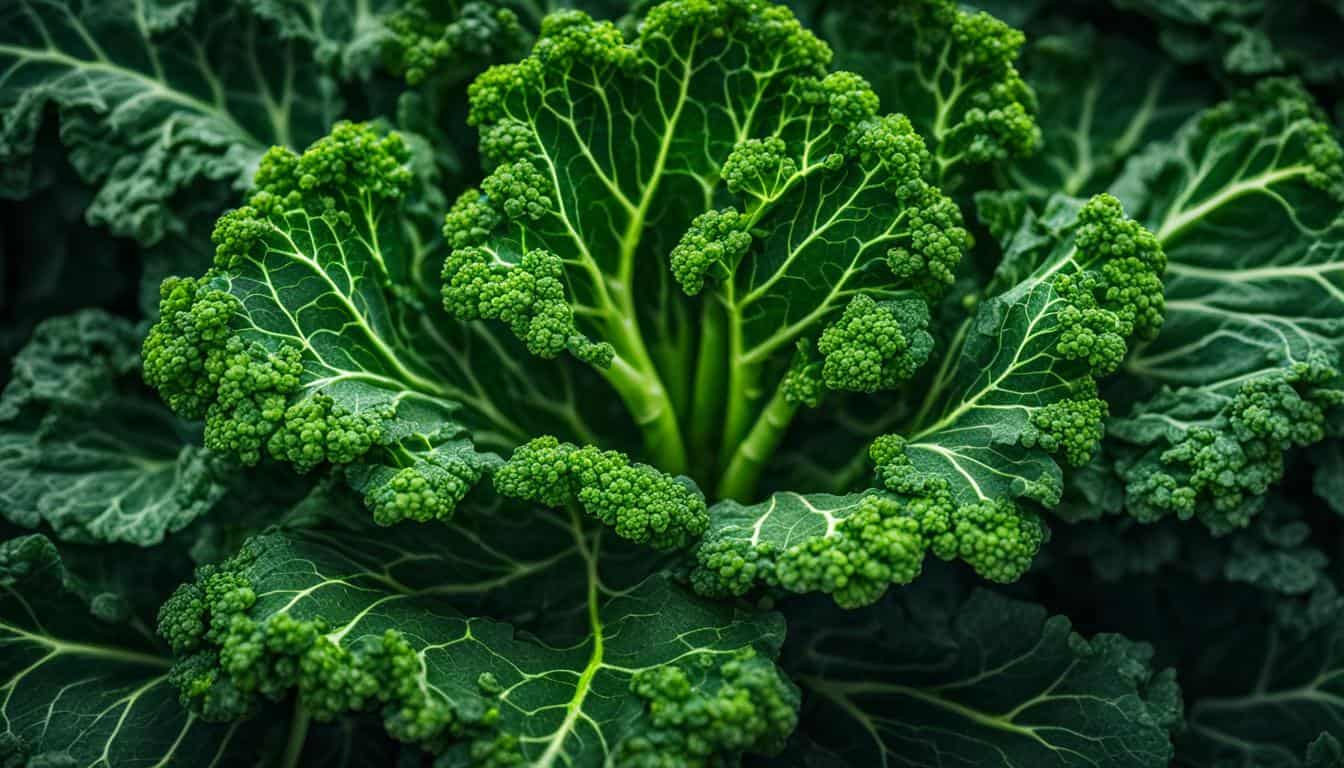
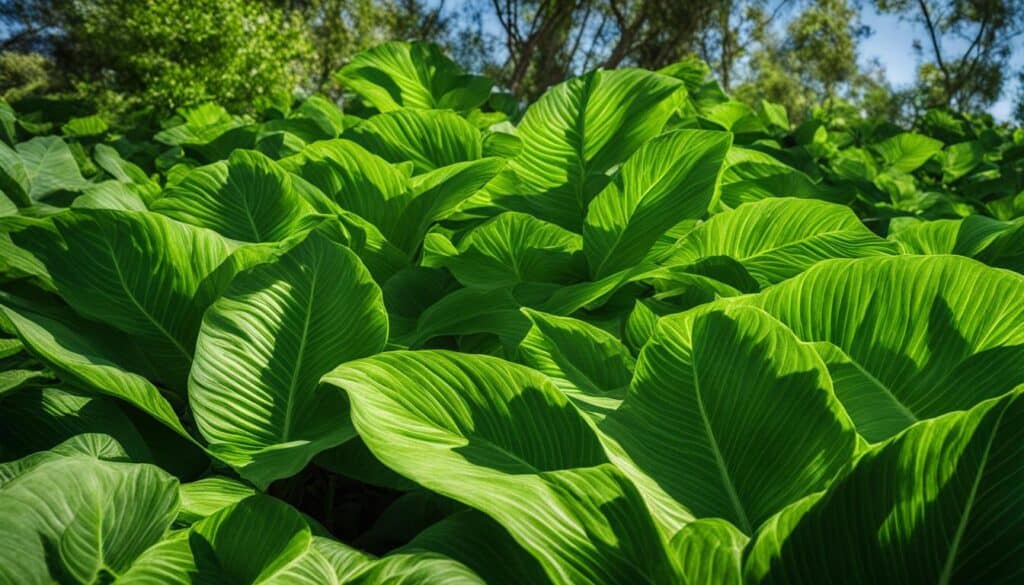

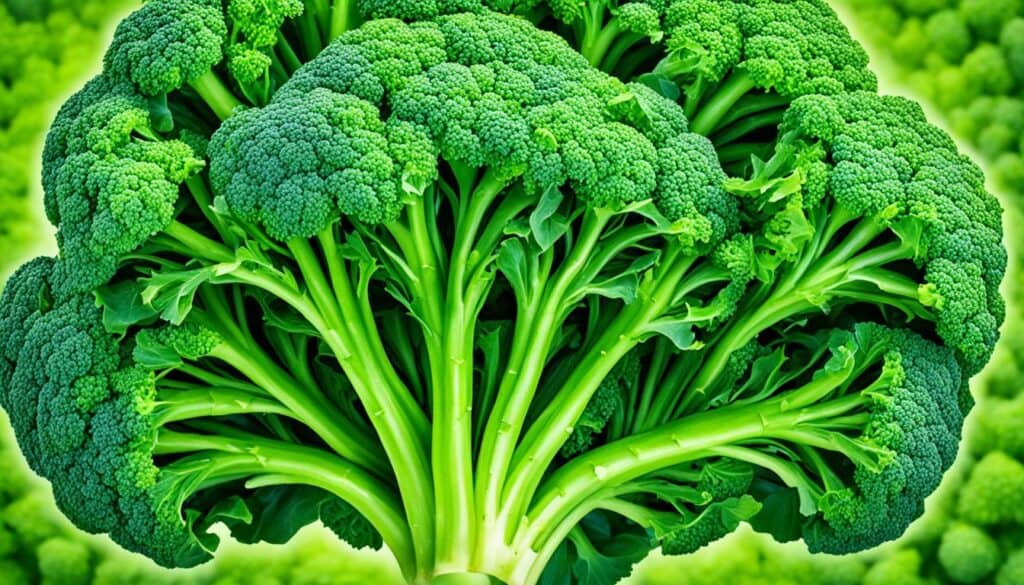
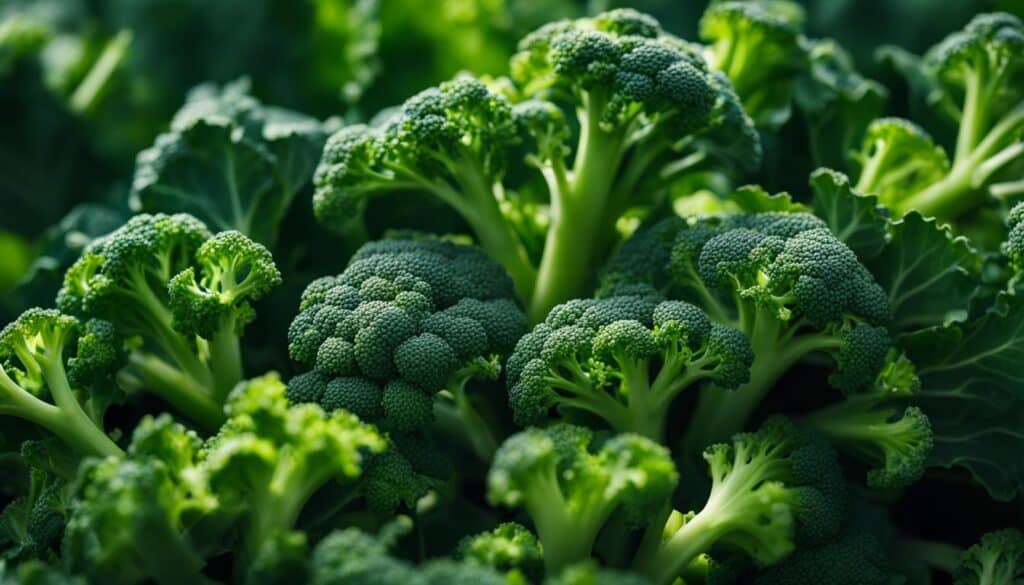
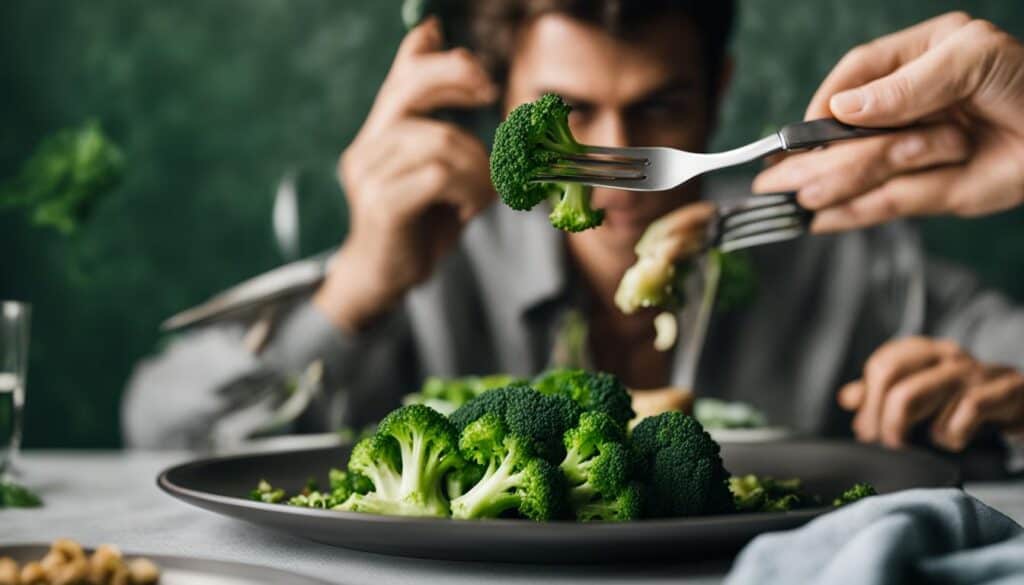



Leave a Reply